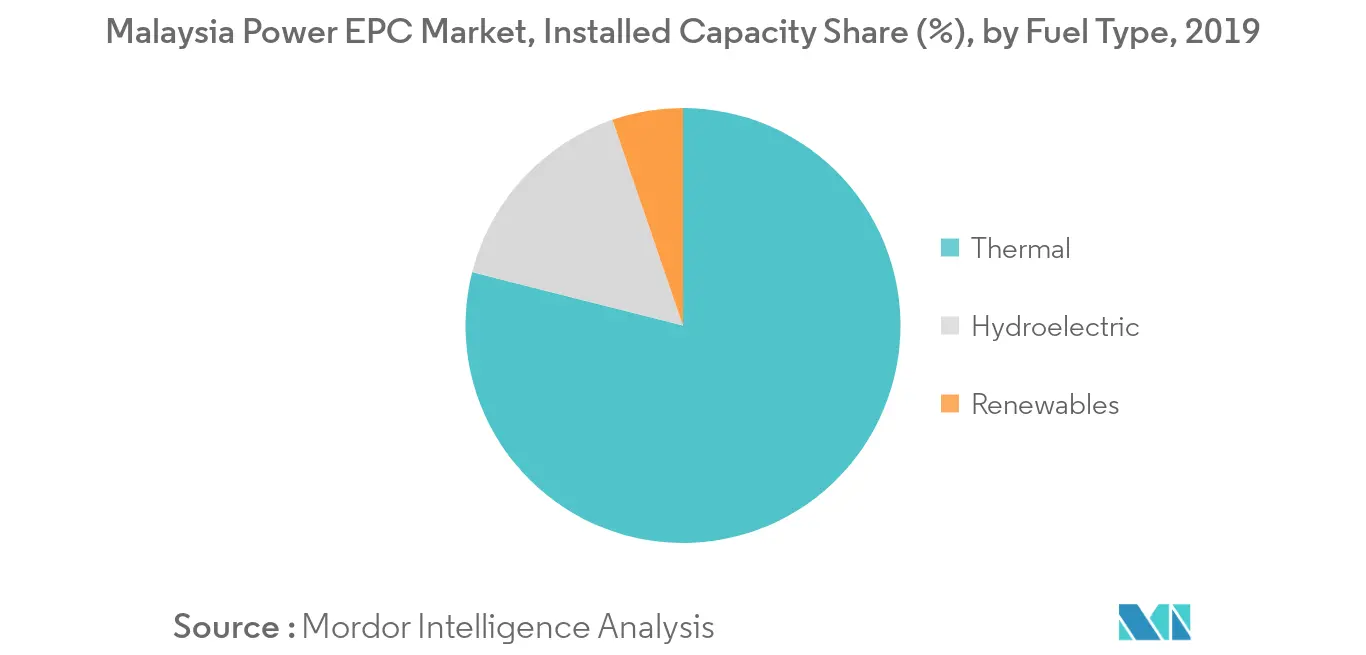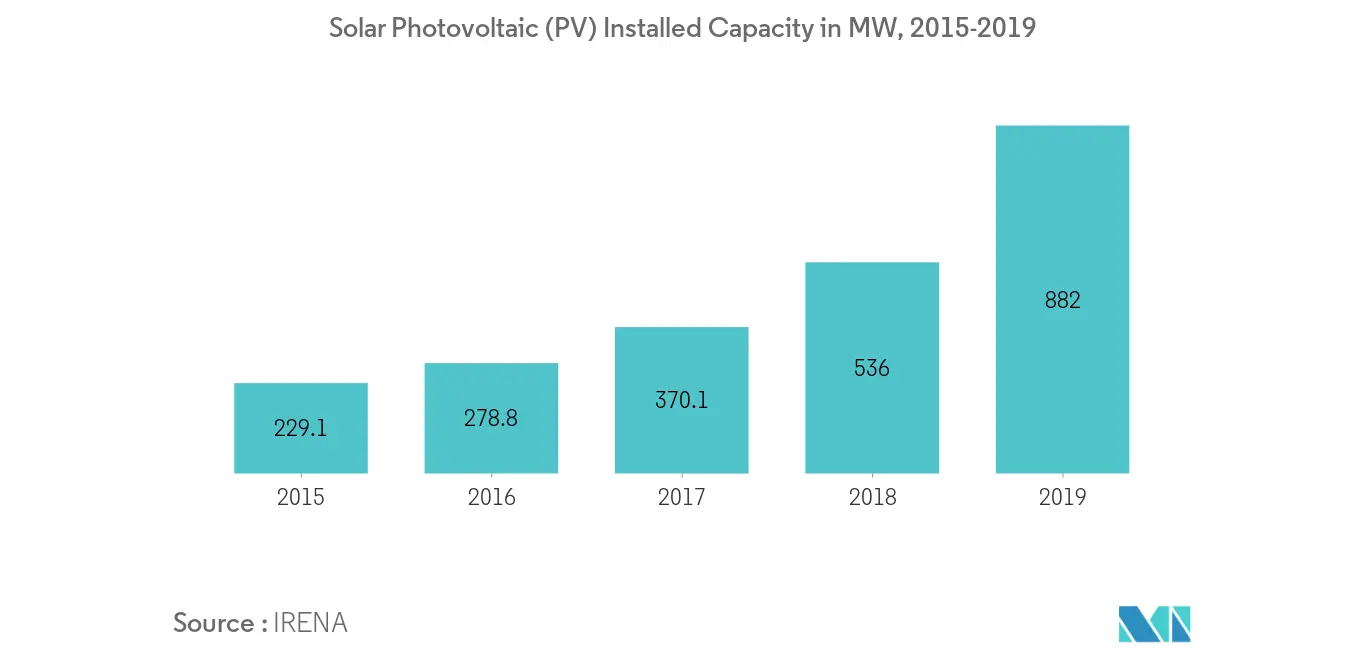Market Trends of Malaysia Power EPC Industry
This section covers the major market trends shaping the Malaysia Power EPC Market according to our research experts:
Renewable Energy Sector to be the Fastest Growing Segment
- The Malaysian economy is industrialized, and is in its growth phase. This signifies the importance of the energy sector. The economic growth is primarily fuelled by the energy sector. Hence, the energy industry's prosperity is imperative.
- The Malaysian Energy Commission was created under the Energy Commission Act 2001, as a new regulator for the energy industry in Peninsular Malaysia and Sabah. The commission was established to improve the efficiency of the industry, in order to meet the challenges of globalization and liberalization, particularly in the energy supply industry.
- The country is committed to energy efficiency measures, and is focusing on the penetration of renewable power in the electricity supply. According to the Malaysian government, 20% of the energy is expected to be generated from renewable sources by the end of 2025. Moreover, it is focusing on replacing fossil fuels with renewable energy, in order to reduce the emission of greenhouse gases.
- Renewable capacity is likely to continue to grow with the commissioning of new solar and biomass plants. The outlook for renewable energy (RE) is also expected to remain bright, supported by the Large Scale Solar capacity bidding and Net Energy Metering (NEM) schemes.
- The country introduced the enhanced net energy metering (NEM) program in January 2019 and solar leasing, to drive the adoption of renewable power. The total quota allocated under the scheme is 50 MW domestic segment, and 450 MW commercial & industrial and agriculture. The scheme is expected to draw USD 509 million in capital investment in solar PV. Under the NEM program, the energy produced from solar PV systems is expected to be consumed first, and any excess energy is expected to be exported to Tenaga Nasional Bhd.
- Malaysia has abundant supply of biomass. The country is expected to take good advantage of waste and by-products from its substantial agricultural and forestry industries, in order to generate biomass-fired power over the coming years. The government is likely to tap into rice, sugar, and palm oil production, along with activities regarding forestry and municipal waste as a source of feedstock for the biomass sector.
- Under the 11th Malaysian plan for development, the biomass sector is identified as a key contributor to the target of sourcing 30% of power from renewable energy within the next eight years.
- Therefore, the renewable energy sector is expected to witness significant growth in the power EPC market in Malaysia due to the increasing government support to encourage the renewable share and the increasing number of renewable power plants owing to the increasing government measures to attract private and public sector financing in the renewable energy sector.

Large-Scale Solar Photovoltaic Plant Creating Opportunities
- Malaysia has introduced the Large Scale Solar (LSS) competitive bidding program to drive down the cost of energy for the development of large-scale solar photovoltaic plants (LSS).
- The Jawatankuasa Perancangan dan Pelaksanaan Pembekalan Elektrik dan Tarif (JPPPET), on 18th August, 2015, agreed on LSS program, for a duration of four years, starting 2017 until 2020. Suruhanjaya Tenaga was entrusted by the government to conduct the bidding process, by inviting private sector companies to build, own, and operate Large Scale Solar PV (LSSPV) plants, to supply and sell energy to the utilities, under long-term power purchase agreements.
- This initiative is expected to be implemented in phases, and at suitable locations, with appropriate capacities, in order to not affect the reliability and security of the power supply systems, as well as, to not have major impact on the electricity tariffs for the consumers. The capacity allocated for the LSS program is 1,000 MW by 2020, with annual capacity capped at 200 MW for four years of implementation, starting 2017. The capacity to be procured is implemented through competitive bidding process.
- The first tender was released in 2016 with a total aggregate capacity of 200 MW in Peninsular Malaysia and 50 MW in Sabah, followed by the second round in 2017 with an increased total aggregate capacity of 360 MW in Peninsular Malaysia and 100 MW in Sabah/Labuan.
- The third round of LSS bidding opened up in February 2019 for an estimated MYR 2 billion (USD 490 million) worth of projects with a target aggregate capacity of 500 MW and expected to commission in 2021.
- Therefore, the increasing number of large-scale solar power projects is expected to create tremendous opportunities in the power EPC market in the country.


